Field robot Earth Rover combats weeds with light
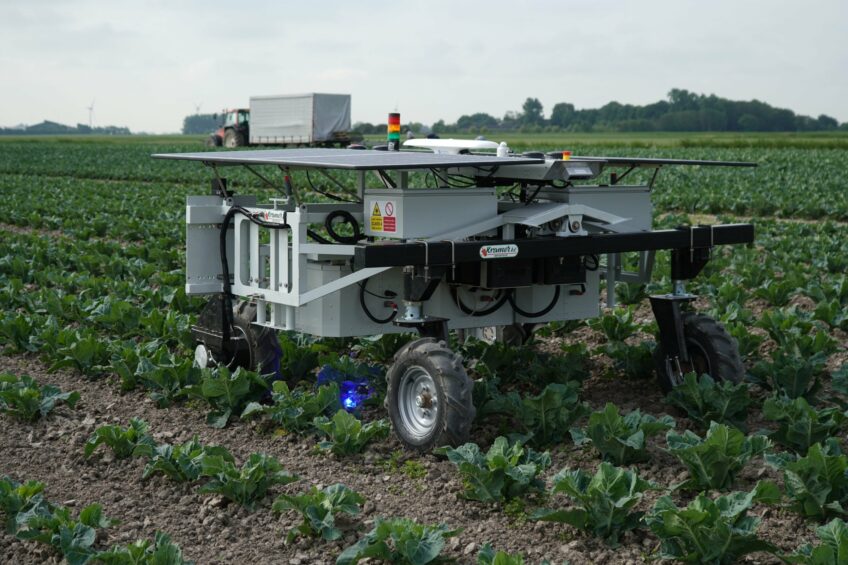
From a distance, the Earth Rover looks much like other field robots. However, upon closer inspection, the weed control method stands out. No mechanical hoe or chains with electricity. The Earth Rover uses light. The first robot is operating at a Dutch arable farm.
To combat weeds, the Earth Rover uses a concentrated beam of light. The light rays heat up the weeds, effectively boiling them. The plant cells are destroyed, and the weed dies. The robot is currently suitable for use in potted crops such as cauliflower and Chinese cabbage.
Plant recognition
he robot recognises the size of the plant in photos. Based on this, the crop and the weeds are determined. The robot operates using GPS signals and comes with a base station that transmits an RTK correction signal for the robot. This allows the machine to drive with an accuracy of up to 2 centimetres.
In addition to the cameras under the machine, which are used for weed recognition, the robot also has a front-mounted camera. This can be used to count and map the crop. According to the manufacturer, this data can be used to map plant health and population.
Read more below the photos
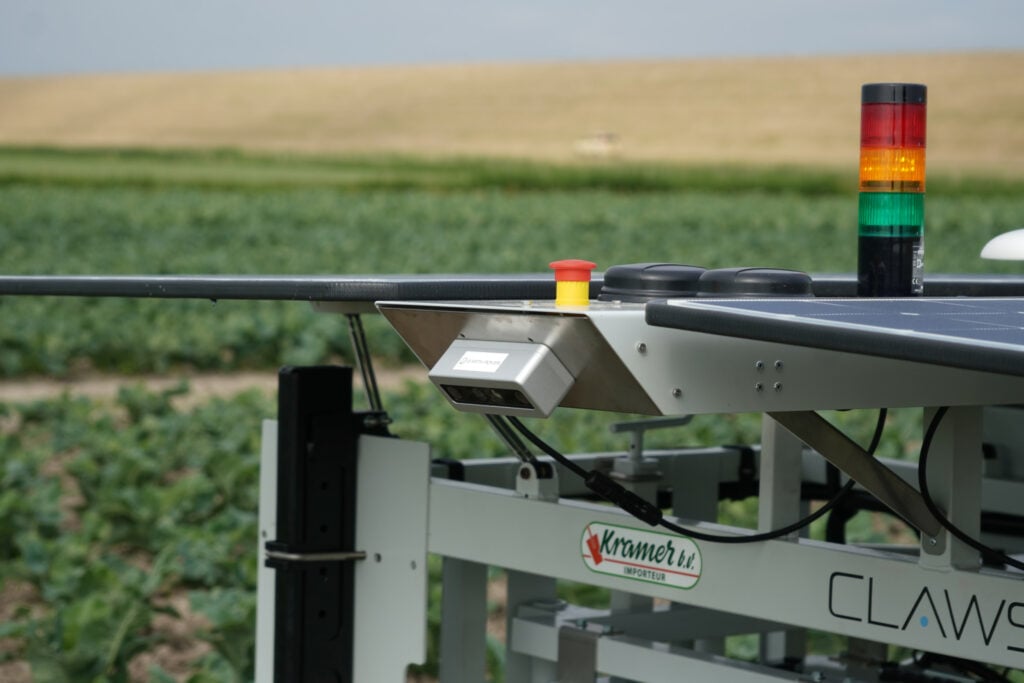
Accurate irradiation
What stands out most during operation is the constant starting and stopping. Every 50 centimetres, the robot stops, takes a photo, boils the plants, and then moves on. “By stopping to take a photo, the robot is more accurate than if it were to keep driving,” says Dirk Reinder de Jong, organic arable farmer and co-owner of arable farm VOF Lyts Ropta, where the robot is currently operating.
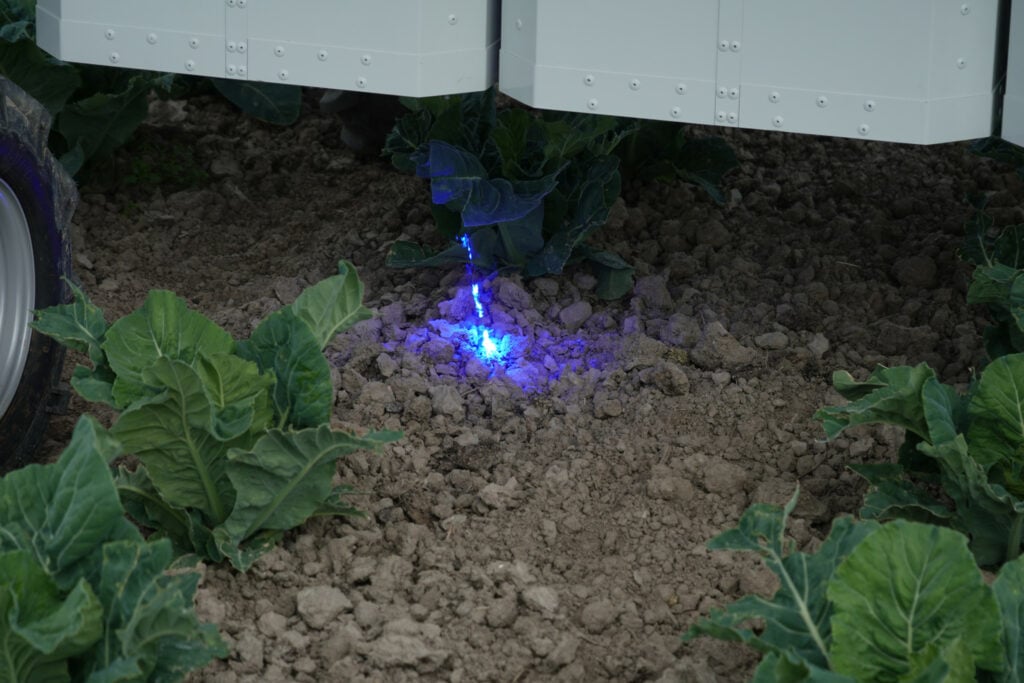
During the laser process, it is noticeable that the machine is indeed accurate. On some plants, scorch marks are still visible. This is not entirely intended. The weed is supposed to be boiled, not burned, but it does demonstrate that even the smallest weeds are targeted
In this field of cabbages, some of the weeds are already quite large. Some are actually too large for the robot to boil effectively. “The machine should actually irradiate the larger weeds in three or four spots,” explains De Jong. During the demonstration, the Earth Rover only targeted each weed at a single point. The company is working on this update, but it has not yet been implemented.
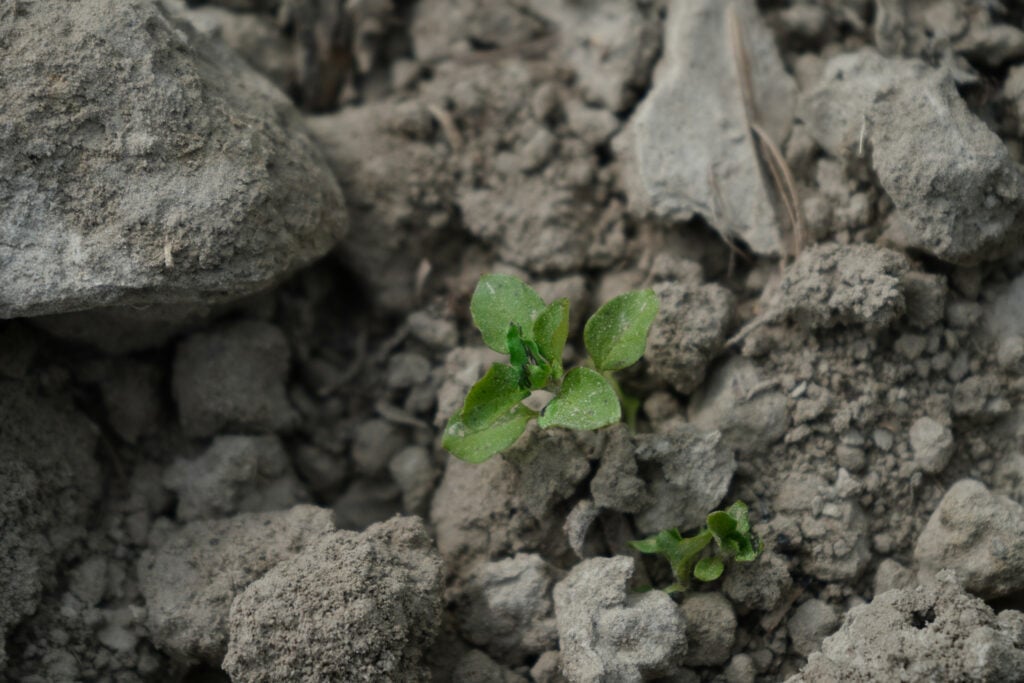
Further development
“The fact that the machine works at all is quite something, as this is the very first unit sold directly to a customer. And it is the first in the Netherlands,” emphasises De Jong. “Basically, it works, and the machine has not had any real breakdowns or downtime in the past weeks,” De Jong continues.
However, the robot is still far from perfect. This is the first version with larger rear wheels. These wheels have too much resistance, so the wheel motors are not strong enough to turn the robot around at the headland. As a result, the Earth Rover currently cannot turn autonomously at the headland and literally needs a push. Additionally, the wheels are mounted in such a way that they do not fit between the ridges. The drive and the motor protrude too far to one side, so the entire construction does not fit between the ridges.
These are all mechanical issues that the manufacturer is currently working to resolve. Importer Kramer in Burgerbrug (N.-H.) expects these improvements to be introduced from July.
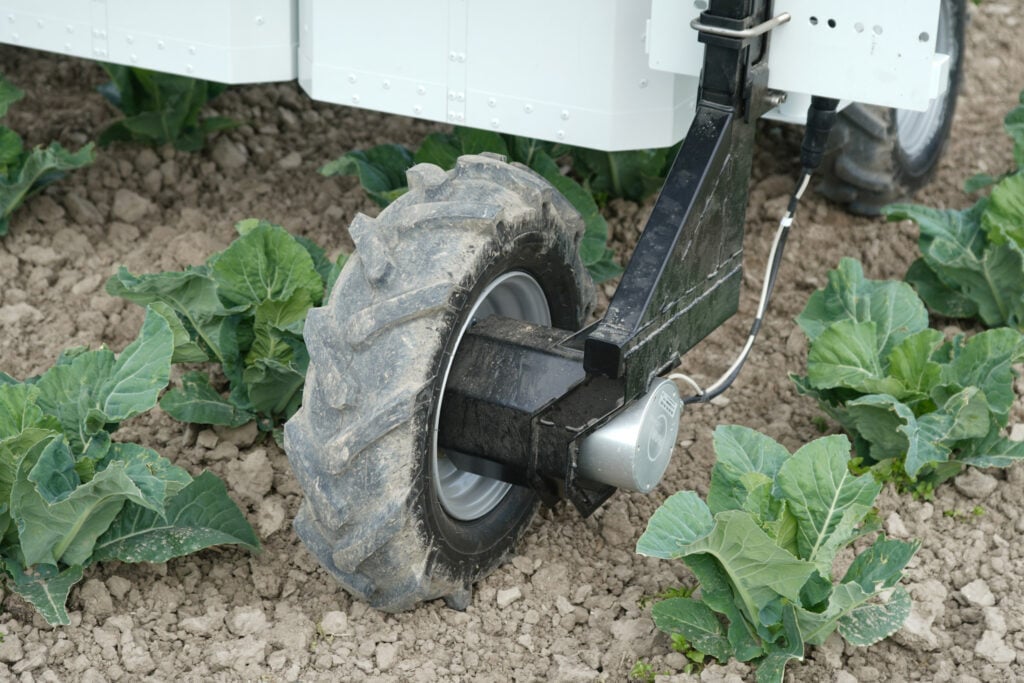
The stopping and starting around the weed boiling process could also be shortened. It now takes around four seconds, down from ten seconds, but this needs to be reduced further. The shorter the stop, the higher the machine’s capacity. Weed recognition can also still be improved. According to the manufacturer, it is currently around 90%. De Jong would actually like to see this at 97%.
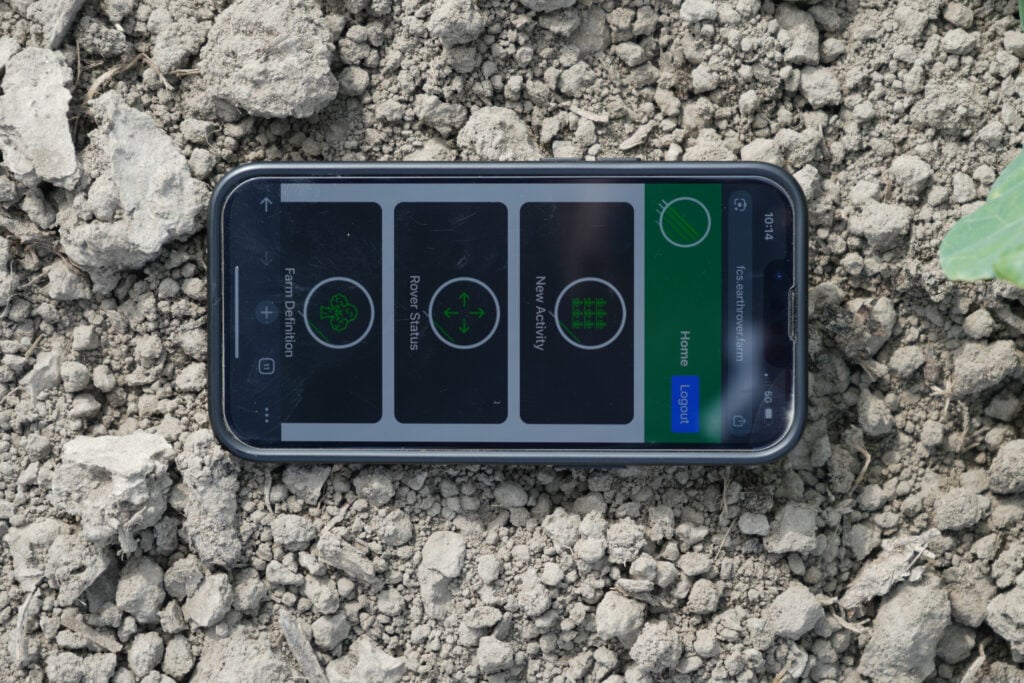
4-hour battery life
On 1 battery charge, with support from the solar panels, the machine can work for around 8 hours before the battery is empty. If the machine works at night, the batteries last for 4 hours. The intention is to add two extra batteries soon. With this doubling of battery capacity, the farmer hopes the machine will be able to operate for 8 hours under all conditions. “Ultimately, the machine should be able to work 24 hours on a single charge, but it is not there yet,” says De Jong.
Importer Kramer B.V. states that the 4 and 8-hour battery life figures are according to manufacturer specifications. Kramer’s experience is that the battery lasts longer.
Outlook
De Jong sees much potential in this machine. The arable farmer mainly sees the machine as a replacement for manual weeding. He hopes to use the machine in winter onions next February and later in 2026 in carrots. Data collection for the algorithm in onions has already started. The manufacturer hopes to be able to distinguish onions from weeds from ten weeks onwards.
All things considered, De Jong finds it a promising machine, “It is great that the algorithm and lasers simply work. Now the further development of the mechanical part.”
Join 17,000+ subscribers
Subscribe to our newsletter to stay updated about all the need-to-know content in the agricultural sector, two times a week.



